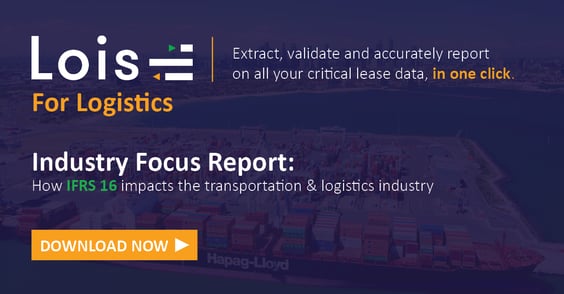As a sector with high overheads and tight margins, there's a range of challenges and opportunities that the transport and logistics industry can capitalise on to reduce their CAPEX and increase productivity. Ultimately, this will help organisations drive profitability and top-line revenue growth, which are key factors in maintaining a competitive advantage in the industry.
In this article, we outline some of the key things transport and logistics companies can do to reduce their CAPEX in the short and long term and increase productivity.
Balance expenditure reduction with revenue growth
One of the biggest challenges persistently present in the transport and logistics sector is cost pressures. In an industry where key players aren't yet differentiating themselves using technological advancements, cost becomes a central factor for businesses to compete when acquiring customers. As a result, margin pressure grows. The default response to addressing margin pressure may be to reduce expenditure, but this can't be done in isolation. Taking a business approach to strategic and operational changes such as reducing CAPEX is particularly important.
Good decision making and resilience are key for a strong balance sheet
According to McKinsey, those businesses that maintained their profit margins and customer relationships throughout the height of disruptions in the pandemic last year implemented specific initiatives to accelerate decision making and increase the organisation's resilience. These initiatives include:
- A resilience "nerve centre", organisation simplification and strong leadership for accelerated decision making
- Unlocking the balance sheet, sharp digital programs and through-cycle interventions for resilience.
The balance sheet is of key concern as changes to global accounting standards have made the process of establishing and maintaining accurate and compliant records more complex. Changes such as the new accounting standard for IFRS16 leases means most leases need to be accounted for "on balance sheet". These changes have impacted how transport and logistics companies account for and report their asset turnover, interest cover, EBIT(A/AR), operating profit, net income, cash flows and financial ratios.

When the IFRS16 changes were implemented, the International Accounting Standards Board estimated that half of the companies in the transport and logistics industry did not recognise up to 85 per cent of leases on their balance sheets. Tailored software solutions make the job of complying with these standards more streamlined, but technology is also prompting a rethink of business models in the industry. As a result, businesses need to consider how they can manage and reduce their CAPEX in the short and long term.
Servitisation: the new frontier in reducing CAPEX in the transport and logistics industry
As an industry that relies on owning or leasing large assets such as ships, trains, planes, trucks, vans, and real estate, the use of these items is a major expense. Owning or leasing these assets is part of traditional product-based business models. These models have a place, particularly for major providers; however, the "servitisation" of business models in the transport and logistics industry will play a major part in reducing CAPEX in the sector over the next five to ten years.
DHL's fifth edition of 'The Logistics Trend Radar' revealed that "outcome as-a-service" models in which businesses in the industry pay for equipment by usage or outcome — for example, when an item is successfully picked — is shifting the industry. Further, a recent IDC white paper found that 82 per cent of global manufacturing businesses surveyed are moving to servitise their business models. According to the paper, servitising provides “5 times more opportunity to accelerate top-line growth above 5% yearly" — not an easy feat in transport and logistics. So, what does this mean for transport and logistics companies?
Rethinking how big-ticket assets are owned, leased and used will be a key trend as technology and new business models disrupt the industry in the medium to long term. Some of these developments will reduce CAPEX, though many businesses are understandably looking to do this in the short term too. To reduce CAPEX in the short term, businesses should look to their smaller assets, such as those that are critical to productivity and have a relatively short useful life.
Productivity: it's about how things are done and the technology used
Smaller assets that have a relatively short operational life are good items to focus on when it comes to reducing CAPEX. Laptop fleets, for example, are something that needs to be kept current at all times. By leasing these items, a business can reduce its CAPEX not just when it comes to the initial upgrade but over the asset's useful life, resulting in reduced cost of ownership. For example, we recently helped a global law firm refresh its technology seamlessly by partnering with the business to manage all end of life and new lease processes.
Ensuring your people have the latest technology also gives you the best chance of having all of the right capabilities to take advantage of new technology for productivity, from cloud-based software to powerful dashboards and analytics tools. The ability to run these programs seamlessly on your people's devices increases productivity. It also enables the workforce mobility that has become critical for organisations of all sizes over the last year.
Maintain a competitive edge: balance short and long-term initiatives
Keeping an eye on your business's long-term CAPEX through remaining adaptable and proactive about changing business models and reducing your CAPEX on smaller assets are key factors that contribute to balancing expenditure reductions and top-line revenue growth in the transport and logistics industry. Not only will this help your business to proactively take advantage of new trends and opportunities, but it will also set the foundations your business needs for continued stability and growth, even in times of global uncertainty.
At Quadrent, we can help you balance reducing your CAPEX while implementing other changes that drive revenue growth. Find out more about how we help transport and logistics companies increase their productivity and profitability here.
